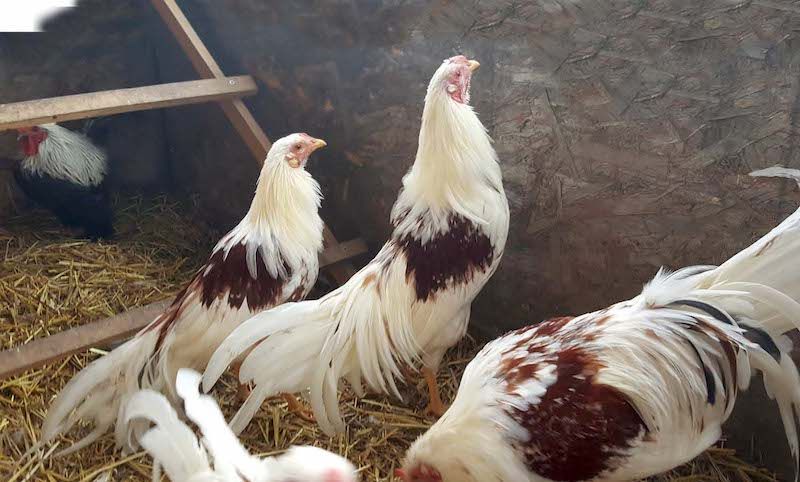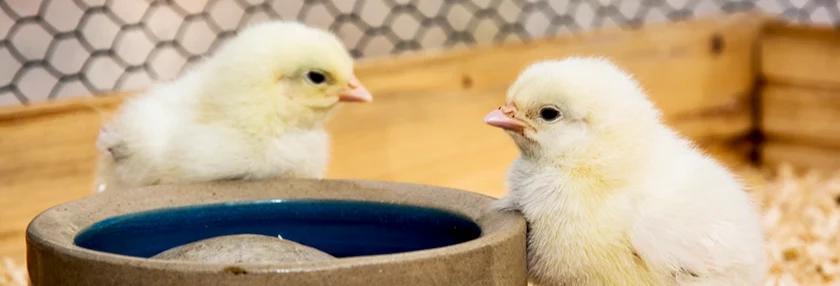Why Not Rare Breeds?


Get the ‘What breed is that?’ conversation started
The chicken movement has increased the number of backyard chicken keepers, that much is for sure. Laws have been changed to allow (or restrict) how chickens can be raised in rural, semi-rural, suburban, and even urban environments.
In many cases, chicken keepers are choosing breeds known for their egg-laying ability (Leghorns, Rhode Island Reds), appearance (Silkies, Brahmas), or languid demeanor (Silkies again, or Speckled Sussex). Some have started their flocks by buying irresistible little yellow peeps from their local feed or tractor supply store—often a roll of the dice.
The result is that some breeds become popular to the point of ubiquity—are found everywhere due to “popularity”—while others quietly disappear from farms and backyard flocks.
But by exploring other breeds that aren’t so commonly used, you not only help save a chicken breed from extinction, you’ll get an enthusiastic “What is that?” conversation going with other chicken keepers.
The list to learn
Every 10 years, The Livestock Conservancy (TLC), an organization that tracks populations of various species and breeds, conducts a census of threatened species. For poultry, Murray McMurray Hatchery in Iowa is sponsoring TLC’s effort.
"Murray McMurray Hatchery is proud to support The Livestock Conservancy and sponsor their upcoming poultry census,” said hatchery president Thomas Watkins. “For 104 years, we have remained dedicated to preserving rare and exotic poultry breeds and the poultry census is a critical component of that mission.
The hatchery has been in the business of preserving rare and exotic poultry breeds for decades.
McMurray Hatchery currently carries 33 of the 49 chicken breeds listed on the TLC priority list and 7 of the 11 listed as most critical.
Checking out rare breeds
Here are some impressive rare breeds to consider for your flock. These are good chickens—they just don’t sit with the “popular kids” at lunch.
Crèvecoeur

Developed in Normandy, France as a meat bird, the Crèvecoeur is one of the standard-bred fowls
of France. Impressively black, males run about 8 pounds and females about 6.5 pounds. They have a small, fine bone structure with plenty of meat, with the breast meat being very white and dark meat very dark. They run a solid black plumage and have a distinctive “v” comb on their heads.
Derbyshire Redcap

Named from the large, rose-shaped comb on its head, Redcaps have red plumage tipped with a blue-black strangle and gray-blue legs. Unlike most white egg-layers that have white ear lobes, the Redcap has red ear lobes. And her eggs are her strength—Redcaps were prized for their low-input egg production. Through very useful to farmers because they tend to be wild foragers, the chicken fell out of favor and was nearly extinct in its native England by 1900. There are few Redcaps being bred today, so if a hatchery offers any, snatch them up.
Silver Phoenix

A true coop attention-getter, Phoenix are an ancient breed in Japan where they were kept in the imperial gardens. Individual males were given special care and the tail feathers sometimes developed to the fantastic length of 20 feet! Modern fowl are still unusually handsome in color and combinations of silver and black and tails are striking although of more ordinary length.
White Faced Black Spanish

The White Faced Black Spanish are graceful and stylish chickens. Their rich, glossy, black feathers, large red combs, and long pendulous white faces and ear lobes give them an unusual and dramatic appearance. With origins believed to date back to the Roman Empire, the White Faced Black Spanish is thought to be the oldest breed in the Mediterranean class of poultry and fowl.
Modern Red Game

The Old English Game fowl have their origins almost with the beginnings of history. With the outlawing of cockfighting in England, the Pit Game was bred for exhibition. Modern Games were developed from the Old English and have an extremely high station—long legs and upright manner—making for a peculiar style and carriage as a result. Modern Games are dubbed (have their combs cut) as chicks when used for showing. The bird shown here is the Black Breasted variety.
Yokohama

This striking long-tail breed, Red Shouldered Yokohamas like this shown here, were first developed in Europe from Japanese breeds brought to Europe by French missionaries. Males have impressive long tails and saddle feathers. Females are good layers of light cream-colored eggs. Yokohama chickens tend to be quiet and gentle.
Tags:Chicken Chatter

Acreage Life is part of the Catalyst Communications Network publication family.














